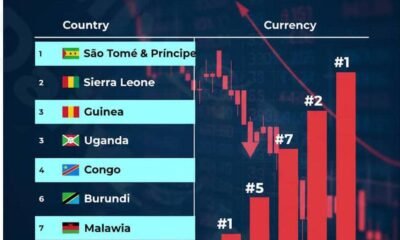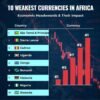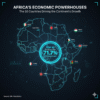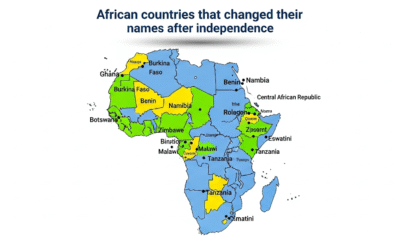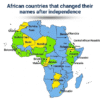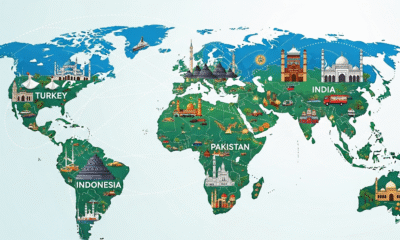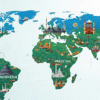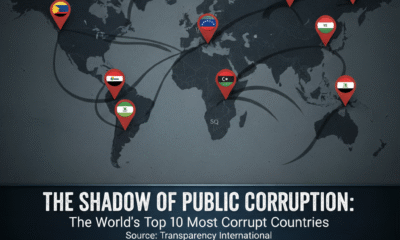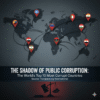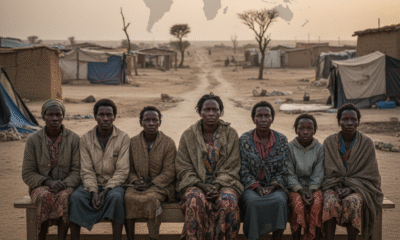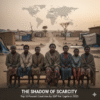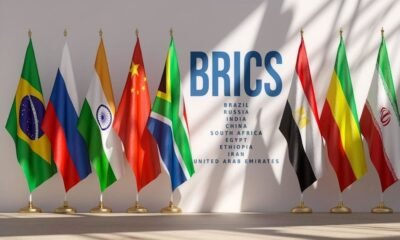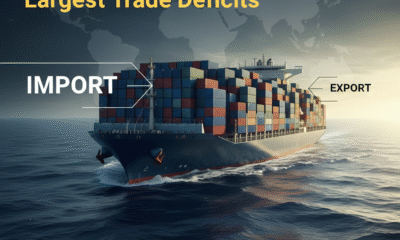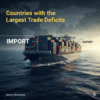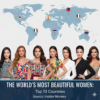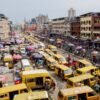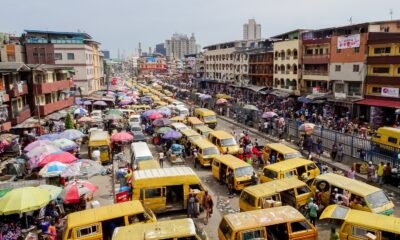Economy
Countries with Largest Manufacturing Companies in Africa in 2025
Africa, behind only Asia, is the second largest continent on earth, a known fact. Africa has many diverse races and colors. Though predominantly black, there are also northern Arabs from Tunisia, Morocco, Egypt, Algeria, Sudan, and also the Shuwa Arabs mainly found in Sudan and Chad Republic.
- Ten Most Followed Kannywood Actresses On Instagram
- Top Ten Most Followed Nollywood Actors on Instagram
Africa as a continent is also packed with many diverse religions, beliefs, lifestyles, norms and values, that is, the do’s and don’ts. There is also political crisis in many parts of the countries, not only the long standing pariah states in countries like Somalia, a country that witnessed a moment of anarchy, a place that falls in the eastern part of the continent, or the full blown civil war in Sudan that will go on to live in the memory of many, or the recent coups in countries like Niger Republic or the junta of Burkina Faso and many as such. Other sudden and disturbing unrest with militants and religious groups like Boko Haram in Maiduguri, in the northern part of Nigeria and many other neighboring states, not even stating its horror and collateral damages to innocent and poor citizens, still though, amidst all these chaos, ten (10) countries stood above the rest in the manufacturing sectors, weaving together their histories, zones, influence, industries, challenges and their currency, their survival to make it to such a daunting list to appear on and their ambitions in the foreseeable future.
1. SOUTH AFRICA (South Africa)
Currency: Rand (ZAR)
Once upon a time, South Africa was dominated and relied heavily on mining activities; that was a story that will live long at least for the records, but gone are the days. As of now and as things stand, the country’s economy relies heavily on mature, upgraded, and diverse manufacturing. With its Gross Domestic Products (GDP) nearly 13% and an estimated over 1.7 million workers, this is not just a number, it was a master class in strategic planning. Its manufacturing activities stretch to automobile plants.
Both politically and economically, South Africa commands attention in BRICS, which is an outstanding feat on its own. Also the African Union and continental forums. Its leaders, arguably Nelson Mandela, then former and present leaders, cast long shadows in the status of the country. The country exports over 60% it builds annually, largely to Europe and neighboring African countries. Still though, South Africa’s challenges include xenophobia especially against Nigerians, inequality among citizens, youth unemployment, energy crisis and periodic unrest that reminds us that wealth has not lifted everyone or more precisely that filling wealth is not a happy ending and never will it be. Yet the industrial scheme in South Africa is still standing firm. As things stand, the country is the largest manufacturing industry in Africa.
2. EGYPT (North Africa)
Currency: Egyptian Pound (EGP)
The Atlas Lions, Egypt’s history and legacy stretches for centuries; it is one of the oldest ancient countries in the world, also the home to one of the first known universities in the form of Al Azhar, also a home to many legendary scholars of Islamic Background. In recent years, the country’s resurgence in terms of manufacturing industries is quite noticeable. Its Suez Canal economic zone and long industrial tradition yield strong output in textiles, cement and electronics (Elsewedy Electronics) and pharmaceuticals (EIPICO) and even more.
Geopolitically, Egypt is a bridge between Africa and the Middle East. It plays important roles in both the Arab League and the African Union, crafting trade and political ties across continents. Its industrial reforms and proximity to Europe amplify its value. But it battles inflation, currency devaluation and social strains amid reforms. Yet manufacturing, driven by strategic zones and export orientation, continues to grow steadily.
3. NIGERIA (West Africa)
Currency: Naira (NGN)
Nigeria, Africa’s most populous country and maybe just 7th in the whole world. Home to the Dangote Group, the richest black person.
Nigeria commands the continent’s largest cement output, massive sugar, salt, flour. Nigeria or Naija as they fondly call it, is jam packed with many riches, boldness, weirdness, crimes, swindles, yet still cultural heritage, religious, traditional, conservative, loud and powerful but squared inside a box commercially.
The newly operational Dangote oil refinery projected to refine around 650,000 barrels per day. Not just the time and numbers, it is not just the 650,000 barrels or the per day duration, making it Africa’s largest. It is a work or a kind of work only chosen for the most committed of men and you know somehow Aliko Dangote is one of the most committed when it comes to business. As per this list, it hugely counts why Nigeria found itself sitting and settling fast as the third nation on the list of countries with the largest manufacturing companies in Africa.
Dangote Cement alone produces over 50 tonnes per year, operating integrated plants in Obajana, Ibese, Gboko and beyond; it is Africa’s largest cement maker with revenues over USD 2.7 billion and presence across 10 countries.
Nigeria’s cultural heft, Nollywood, Afrobeats, leaders like Ngozi Okonjo Iweala, adds soft power. Economically, it is the third largest manufacturing country on the continent after South Africa and of course Egypt.
Challenges include energy shortages, internal security, youth unemployment and serious environmental and social concerns around mega projects, especially displacement around Lagos’s mega refinery. Yet Nigeria surges forward with its corrupt and highly controversial leaders in the frontline, with business men and women from all regions of the country, its artists and professionals in different fields of play. Its domestic market size alone keeps global investors watching and drooling.
4. MOROCCO (North Africa)
Currency: Dirham (MAD)
North African country, Morocco now balances souks and solar farms with sprawling industrial parks in Tanger Med and Casablanca. A Stellantis Kenitra plant is doubling capacity to 535,000 vehicles annually, a work of precision, focusing on electric city cars, a £1.2 billion bet on future mobility. Beyond automotive, Morocco’s OCP group is global phosphate leader, vital for fertilizer supply, while aerospace firms like Bombardier and aircraft components makers thrive in export zones.
With ties to the EU, a growing share of local sourcing and export deals agreements sealed Morocco’s slot in this list. Morocco plays a stabilizing, or bridging role between Africa and Europe. There are challenges though; youth under employment and rural marginalization are certain, but robust economic planning, political stability and modernization in driving forward seal its place at fourth.
5. KENYA (East Africa)
Currency: Kenyan Shilling (KES)
Nairobi, the country’s capital, was once just a safari gateway, now East Africa’s innovation and industrial hub. Kenya’s output in food and beverage, agro processing (Bidco Africa), dairy (Brookside), plastics, textiles, and emerging electronics and pharmaceuticals gives it both the needed length and a full breadth.
Kenya’s geopolitical role in the East African Community (EAC), plus its leadership in peace diplomacy, grants influence beyond GDP numbers. Fintech success with M PESAreaches millions in neighboring countries. This is quite remarkable.
Despite occasional political unrest, corruption and infrastructure gaps, Kenya presses ahead. Today, manufacturing accounts for 7% of GDP and Kenya ranks in the top five industrial nations in Africa, and that should tell you why the country sits out the fifth chair in this list of countries.
6. ETHIOPIA (East Africa)
Currency: Birr (ETB)
The Horn of Africa at No. 6, that is Ethiopia, one of Africa’s oldest nations and seat of the African Union, is rewriting its narrative, embracing industrial parks as engines of change. The Hawassa Industrial Park, launched in 2016, covers 150 hectares, employing up to 35,000 workers in textiles and garments production for global brands. Occupancy rates run above 85% and factories like Kilinto and Debre Birhane serve both domestic and export needs.
Nonetheless, Ethiopia’s rise is uneven. Civil conflict in the north, loss of AGOA privileges in 2022, pandemic shocks, inflation, and weakened Birr have triggered mass layoffs and tattered worker wellbeing in industrial zones, especially among migrant women. Still, Ethiopia’s ambition persists; look, it means it wants to punch and land above its weight on continental industrial maps. It is trying to reshape it with a force that breezes past many challenges.
7. ALGERIA (North Africa)
Currency: Dinar (DZD)
Algeria remains Africa’s largest nation by landmass, at least, but do not downplay the word least. Algeria is rich in hydrocarbons and grinding toward industrial diversification. The state owned Sonatrach dominates oil and gas (revenues over USD 77 billion in 2022) but supports industries in petrochemicals, steel (Sider El Hadjar), and pharmaceuticals (Saidala).
Politically speaking, it took center stage in the Maghreb, active in Sahel diplomacy, and retains hard earned influence from the anti colonial struggle especially against France. Yet its economy remains firmed to oil prices. Unemployment, especially among youth, is high and manufacturing reforms are ongoing to reduce the over reliance on hydrocarbons. Still its legacy and infrastructure positions cannot be over stated.
8. Ghana (West Africa)
Currency: Cedi (GHS)
Ghana was first among African nations to gain independence in 1957, and today brings stability, democratic governance, and growing industry to West Africa. Manufacturing here includes Cocoa processing, food and beverage (Kasapreko, Fan Milk), plastics, pharmaceuticals and steel.
Ghana houses the AfCFTA secretariat, underlining its central role in continental trade design. Manufacturing accounts for about 10% of GDP, engaging roughly half a million workers. Government initiatives like One District, One Factory encourage SME growth across diverse sub sectors.
Debt crisis, inflation, currency pressures pose risks. But Ghana’s reputation for political stability attracts investors even as manufacturing slowly gains momentum.
9. Tunisia (North Africa)
Currency: Tunisian Dinar (TND)
Tunisia, the birthplace of the Arab Spring, remains one of Africa’s most educated countries. Its manufacturing centers export to Europe thanks to proximity and trade agreements. Tunisia’s key manufacturing industries include textiles, automotive wiring, electronics (One Tech Group), food processing and construction materials. Despite social and political turbulence since 2011, Tunisia’s skilled labor force and export oriented factories and strong ties to the EU keep it relevant in continental industry. Youth joblessness and inflation occasionally interrupt progress. Yet manufacturing continues serving both markets within and beyond.
10. ZAMBIA (Southern/East Africa Confluence)
Currency: Zambian Kwacha (ZMW)
A wild card entry in such an exemplary list falls to the Zambians. Zambia may surprise readers, but it has steadily climbed industrial ranks through agro processing (Zambeef), cement (Lafarge Zambia), steel, trading (Trade Kings) and even consumer goods. It now ranks among Africa’s top ten hosts of large manufacturing firms, especially for regional markets. Its export corridors reach DRC and Zimbabwe, and it continues investing in industrial parks to boost local value addition. Dependency on copper, inflation and periodic governance are real issues but the country embraces industrial policy schemes and local content laws to scale its domestic sectors.


